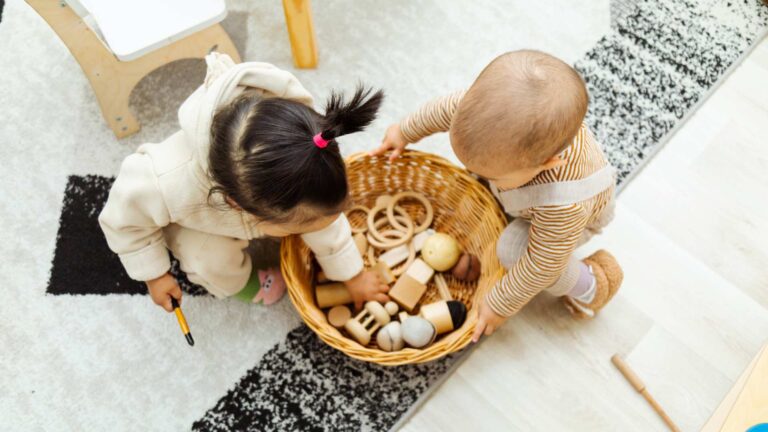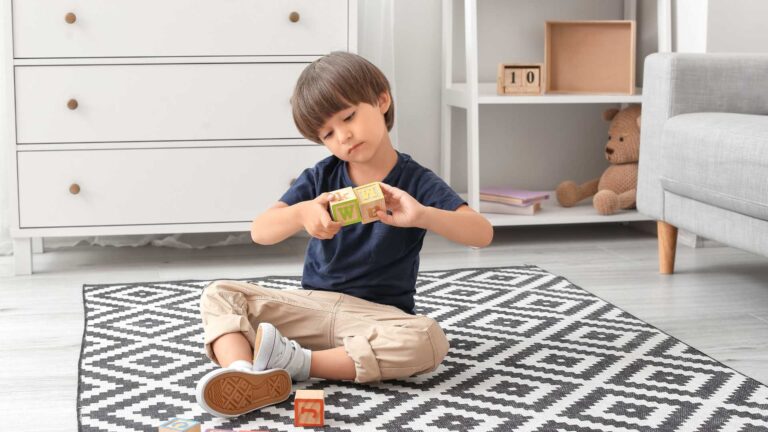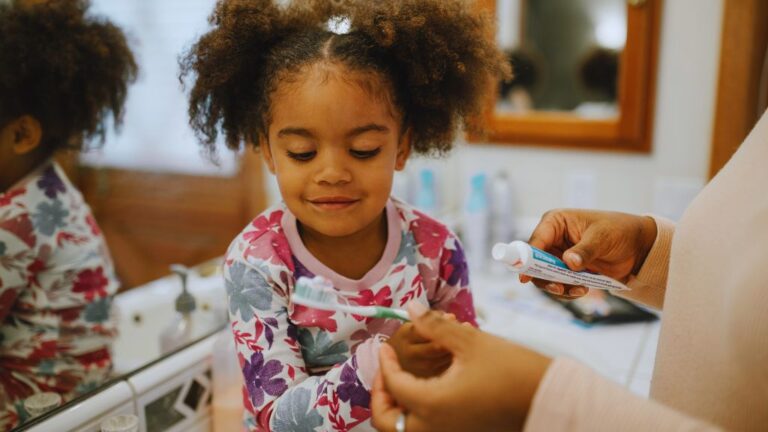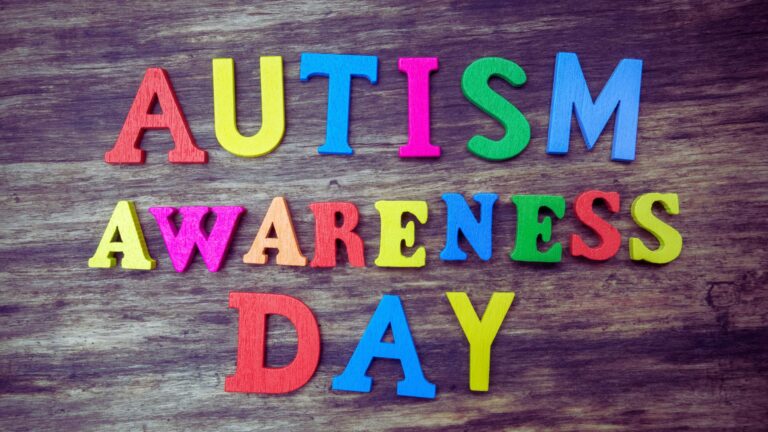Table of Contents
What is a sensory toolkit for autism?
Have you ever felt bored, sensory overloaded, or full of energy and found yourself doodling in a notebook, fidgeting with a pen, or engaging in some activity to relieve that overwhelming sensation? If you have, you might have a glimpse into the experience of individuals with Autism Spectrum Disorder (ASD). For them, the environment, noises, and bright lights can be even more impactful, necessitating tools to help calm these sensory experiences. This moment is where the sensory tool kit comes into play.
So, what is a sensory toolkit for autism? A sensory toolkit is a collection of items designed to help individuals with ASD manage sensory input and maintain focus. These tools can include fidget toys, noise-canceling headphones, weighted blankets, and chewable jewelry, each catering to different sensory needs and preferences.
We know you want the best for your child, especially when it comes to positively managing autism sensitivities. At ABA Centers of America, we’ll teach you how to create a personalized sensory tool kit for your child, ensuring a more effective and caring approach!
Autism and Sensory Sensitivities
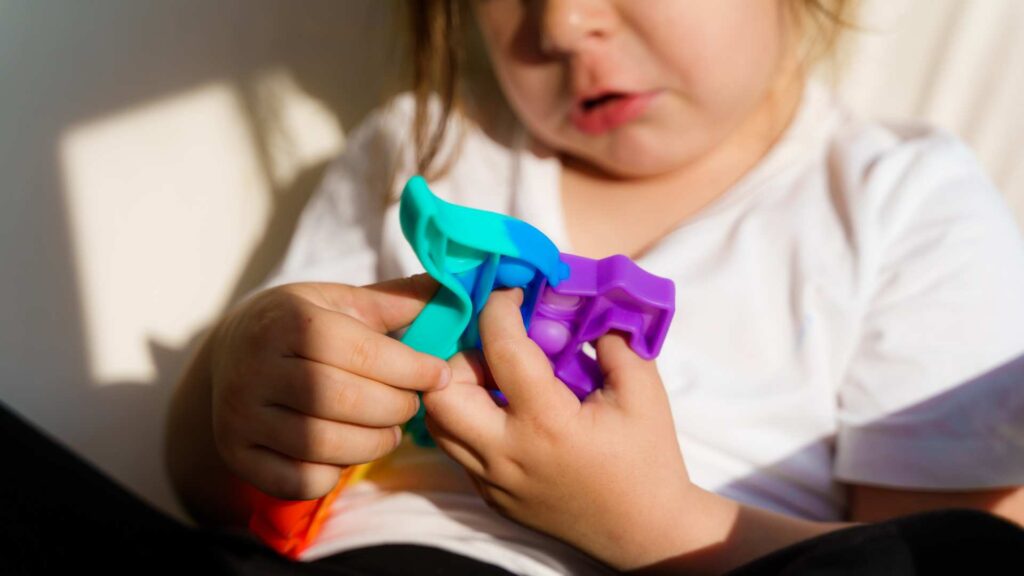
Before we teach you how to create an effective sensory kit, it’s essential to understand the sensory sensitivities present in autism. This understanding includes why they occur, who they affect, and what we can do to minimize them. With a deeper understanding, you will be able to address your child’s specific needs more effectively and compassionately.
Autism spectrum disorder often involves atypical sensory processing, where the brain may struggle to balance and integrate sensory information effectively. This imbalance can lead to sensory overload, where everyday stimuli become overwhelming, or sensory under-responsivity, where there is a reduced reaction to sensory input. According to the International Journal of Environmental Research and Public Health, Up to 90% of individuals with ASD experience sensory hypersensitivity, which often leads to disruptive behaviors.
So, what can affect them? For example, a child with autism might find fluorescent lights painfully bright, certain fabrics intolerably rough, or specific noises unbearably loud. Conversely, they may not respond to stimuli that others find noticeable, such as not reacting when someone is calling them.
Understanding these sensitivities involves recognizing that individuals with autism have differently wired sensory systems. This neurological variation affects how they receive, process, and respond to sensory information, often requiring personalized strategies to help manage these experiences.
Moreover, while all individuals with autism may experience some level of sensory sensitivity, the nature and extent can vary greatly. Factors such as age, co-occurring conditions, and individual differences play significant roles. Children, in particular, might struggle to articulate their discomfort, making it essential for parents and caregivers to observe and interpret their behaviors to understand their needs better.
Learn About Your Child’s Autism Needs
Now that you understand sensory sensitivities in children with autism, it is time to focus on identifying these needs in your child. Recognizing and addressing your child’s unique sensory experiences is crucial for providing practical support and enhancing their quality of life.
Identifying Sensory Sensitivities
The first step in identifying your child’s sensory needs is careful observation. Pay attention to how your child responds to various sensory stimuli in their environment. This reaction might include:
Visual Sensitivities: Notice if your kid is distressed by bright lights, flickering screens, or specific colors. They might cover their eyes or avoid looking at specific objects.
Auditory Sensitivities: Observe if loud noises, such as vacuums or sirens, cause your child to cover their ears, become anxious, or withdraw. Similarly, check if they have difficulty processing conversations or background sounds.
Tactile Sensitivities: Watch for reactions to different textures or fabrics. Your child may resist wearing specific clothing or react negatively to certain surfaces.
Olfactory Sensitivities: Be aware of how your child responds to various smells. They might be averse to certain foods, perfumes, or household odors.
Gustatory Sensitivities: Note if your child has solid preferences or aversions to specific tastes, which can affect their eating habits and nutrition.
Understanding Behavioral Cues
Children with autism may not always verbalize their sensory discomfort, so it’s important to interpret their behaviors. Look for signs such as:
Meltdowns or Tantrums: These might occur when your child is overwhelmed by sensory input.
Avoidance: They might avoid certain situations, places, or activities that trigger sensory discomfort.
Repetitive Behaviors: Engaging in repetitive actions or seeking out specific sensory experiences can be a way to self-regulate.
How Does a Sensory Tool Kit Support Regulation?
A sensory tool kit supports children with autism by providing targeted tools to manage sensory sensitivities. These kits typically include items like fidget toys, noise-canceling headphones, and weighted blankets, each designed to address specific sensory needs such as auditory overload or tactile discomfort. Offering a sensory tool kit helps children regulate their sensory experiences more effectively and even independently.

For example, Consider a child who experiences auditory sensitivities, where loud or sudden noises cause significant discomfort or anxiety. In this case, noise-canceling headphones can be a highly effective tool from a sensory kit. These headphones help by reducing the intensity of external sounds, creating a quieter and more manageable auditory environment.
Create an Effective Sensory Tool Kit

If you’ve followed along and now understand how different sensory sensitivities impact your child with autism, it’s time to create a sensory tool kit tailored to their needs. Here’s a comprehensive guide to assembling an effective kit, including additional items to consider:
Essential Items for Your Sensory Tool Kit:
- Noise-Canceling Headphones: Ideal for reducing overwhelming sounds in noisy environments, helping your child stay calm and focused.
- Fidget Toys: Stress balls, spinners, and textured objects provide calming tactile input and help manage restlessness.
- Weighted Blanket: Offers deep pressure input, which can be soothing and help your child feel secure.
- Sensory Brush: Provides gentle tactile stimulation to help with tactile sensitivities and promote relaxation.
- Chewable Jewelry: Safe, chewable items like necklaces or bracelets for children who need oral sensory input.
- Aromatherapy Oils or Sachets: Essential oils like lavender or calming sachets can offer soothing olfactory input. Be sure to choose child-safe options and observe how your child responds to different scents.
- Body Brushes: Soft body brushes or scrubbing gloves can provide calming sensory input and help with tactile sensitivities. They are handy for sensory integration activities.
- Sensory Balls: Textured balls or squishy toys that provide varied tactile experiences and can help with sensory processing.
- Calming Apps or Visuals: Apps or digital tools designed for relaxing or relaxation, such as nature sounds or soothing visual patterns.
Where to Get the Items:
You can purchase many items from specialty stores, online, or from retailers that focus on sensory tools. However, you can also make some tools at home for a more personalized approach:
- DIY Sensory Bottles: Use plastic bottles filled with water, glitter, and other safe materials to create calming visual stimuli.
- Homemade Fidget Toys: You can make simple fidget tools like putty or stress balls using everyday household items.
- Aromatherapy Sachets: Create sachets filled with calming herbs like lavender for a soothing scent.
Customize the sensory tool kit based on your child’s specific sensitivities. Observe their responses to different items and adjust the kit as needed. Regularly review and update the kit to ensure it continues to meet your child’s evolving sensory needs.
ABA Centers of America Helps You Navigate Autism
At ABA Centers of America, we understand that managing autism involves addressing a range of needs, including sensory sensitivities and challenging behaviors. Serving families in New Hampshire and Massachusetts, our personalized ABA therapy provides targeted support and interventions tailored to each child’s unique needs. Our experienced therapists work closely with families to develop effective strategies and create individualized plans that enhance your child’s well-being and development.
If you’re ready to take the next step in understanding and supporting your child’s needs, call us at (844) 923-4222 or schedule a free consultation to learn more about our autism care services. Let us help you create a supportive environment and achieve positive outcomes for your child.
Discover how our customized therapy solutions can make a meaningful difference in your family’s journey.

